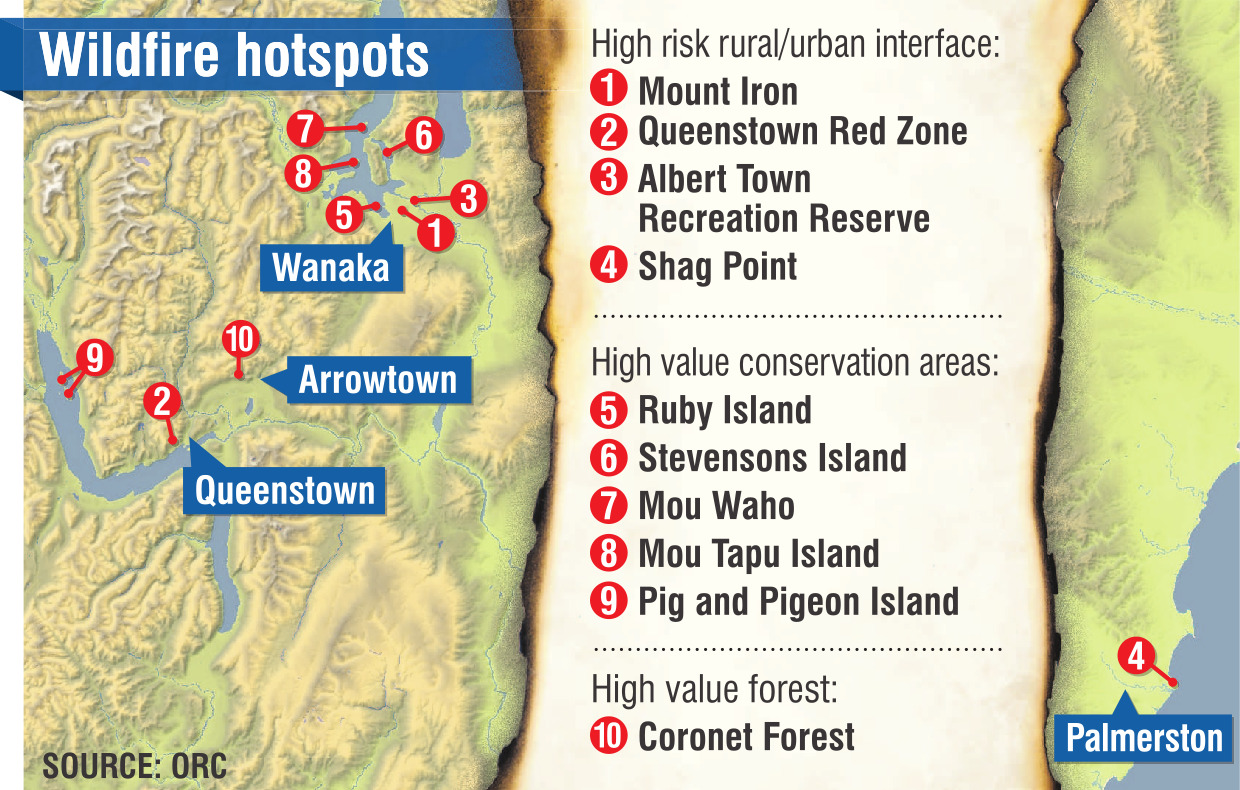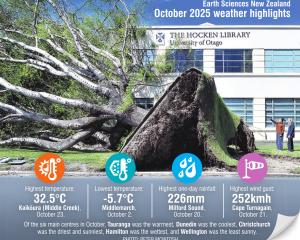
Councillors will be asked today to give the go-ahead for the council to start talking with its civil defence partners about the present and future risk of unplanned, out-of-control fires in the region.
The conversation should include "member roles and responsibilities" for managing the risk, a staff report said.
Fire and Emergency New Zealand (Fenz), the Otago Civil Defence and Emergency Management group, the Department of Conservation and local authorities all had a role to play in the "reduction, readiness, response and recovery" from both the risk of wildfire and the fires themselves, the report said.
The Fire and Emergency Act 2017 defined Fenz’s main functions as "lead response agency" for fire.
"What is not as clear are the roles and responsibilities across the reduction, readiness, and recovery phases," it said.
"ORC... must be planning and preparing for emergencies involving wildfire and be capable of implementing necessary responses if serious wildfire events occur."

"Common effects of wildfires include loss of life and property, health impacts of smoke and fire, economic and ecosystem services losses, and contamination of water air and soil," the report said.
All climate-related measures - including temperature, precipitation, humidity and wind speed - on average, were expected to intensify the wildfire risk until the middle of this century, the report said.
At present, the region faced 14.2 days a year when the risk was "very high" or "extreme" for large wildfire outbreaks that would require considerable control efforts, it said.
That risk was not evenly spread across the region, though.
The region’s central zone spent 34.8 days at that level of risk, the Lakes zone 11.7, coastal Dunedin and Waitaki 6.4 days and Clutha less than one.
However, fire risk was due to increase both in terms of the intensity of fires that took hold and the length of the season during which "fire weather conditions" persisted.
The report reiterated a recent warning from Crown research institute Scion, which said conditions that led to Australia’s "devastating ‘Black-Summer’ fires", the 2019–20 Australian wildfire season, would occur every three to 20 years in areas of Marlborough, Mackenzie Country, and Central Otago.
During the 2020-21 wildfire season, the Otago area, as defined by Fenz, accounted for just 7% of the total number of wildfires in the country, but 63% of the total area burnt.
The figures were heavily influenced by the Lake Ohau Village wildfire, in October 2020, when 5000ha burned.
The management of wildfire across the "reduction, readiness, response and recovery" framework was not clearly defined or contained in a single piece of legislation, but rather across a broad range of documents, from the Civil Defence and Emergency Management Act 2002 to the Resource Management Act 1991, the report said.
Wildfire is listed as a "known hazard" in the Otago Civil Defence and Emergency Management group plan where it is described as "an annual hazard across many areas of Otago".
Wildfires were a potential risk at any time - particularly in the "red zones" around Queenstown Hill and Mt Iron in Wanaka, where a total fire ban was in place year-round, the report said.












